Stagmomantis limbata (Bordered Mantis)
Introduction:
Stagmomantis limbata have a wider range than californica, rumored to range all the way into New England. The limbata are larger and have yellow hindwings compared to californica and carolina and are much more abundant than both in the western US.The wings of limbata also end in a wider shape and extend farther than the wings of other stagmomantis species (females specifically). The adaptability of limbata compared to the other stagmomantis species makes it a great beginner stagmomantis.
- bulkiest Stagmo
- border on tegmina—hence the common name
- yellow(checkered) hind wings
- South Western USA (McMonigle 135)
Difficulty level: beginner.
Behavior/temperament:
The adults are not shy and females can be quite aggressive.
Captive Environment:
S. limbata are very adaptable, but need a bit more room than S. californica. Sub adults are a bit too large to fit in just a 32 oz deli, and a slightly larger container should be used. This species can be kept at room temp or a bit hotter their entire lifecycle, and they like humidity to be about 60%. However, they are much more tolerant of a range between 30 and 65% than the other stagmomantis species. Nymphs should be housed individually and should be given mesh or plant material to cling to.
Feeding:
The large L1 nymphs of this species will greatfully accept D. hydei, and L2/L3 will eat houseflies. Females eat bottleflies as early as L3, and at L4, both sexes can handle bottleflies. This species loves to eat crix and roaches, and a varied diet helps them grow fast and large.
Breeding:
This is a very prolific species, and breeding is very easy.The adults are not shy and females can be quite aggressive. They are ready to mate 3 weeks into adulthood, and females should be very well fed before mating. It's advisable to introduce the pair in the open, with the female distracted with prey. Mating is easy to commence and lasts 3-6 hours. Females like sticks to lay ooths on and can lay 4-8 ooths in their lifetime.
Oothecae:
Females like sticks to lay ooths on and can lay 4-8 ooths in their lifetime. Ooths dont need diapause and hatch out after 2-3 months of incubation at 70-80 degrees with daily mistings. 60-120 nymphs hatch out of each ooth over a one week period. L1 nymphs are rather hardy compared to other Stagmomantis species.
L1
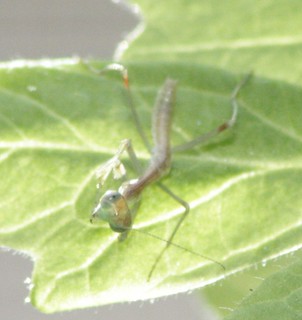
L4 male
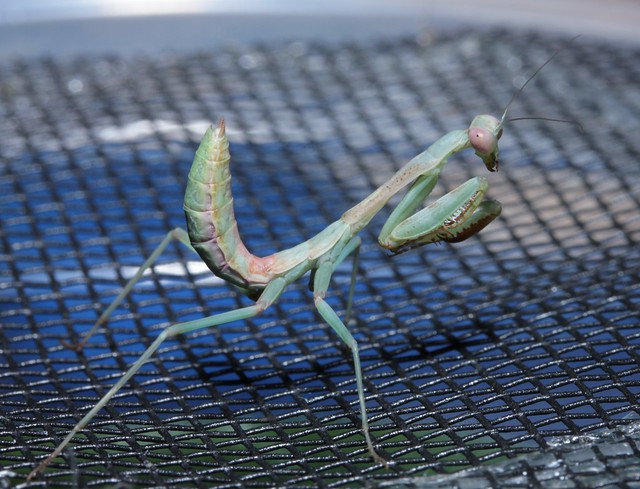
L6 female
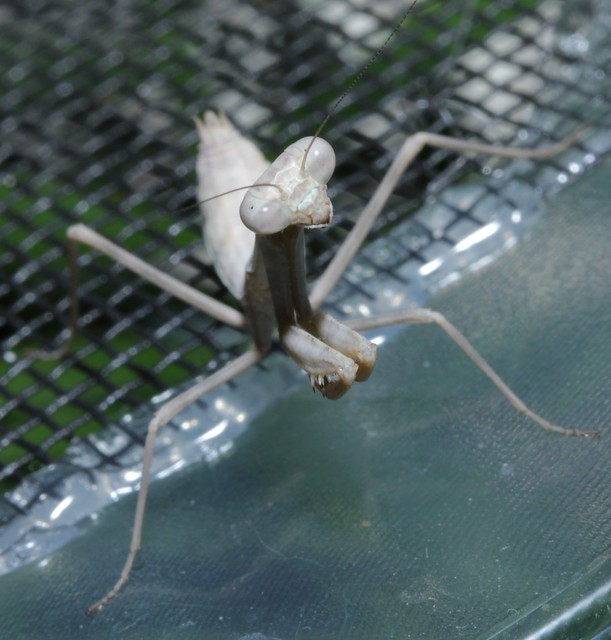
subadult female
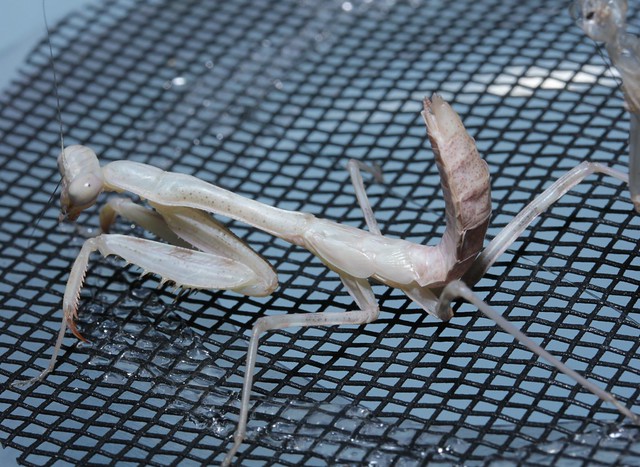
adult female, displaying the blue line on the lips
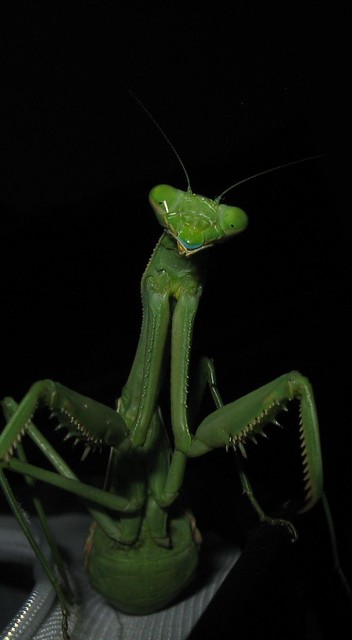
Contributors: agent A, jamurfjr, Orin, DonovanXFrancesca
*McMonigle, Orin A. (2013) Keeping the Praying Mantis. Coachwhip Publications, Greenville, Ohio

Last edited by a moderator:



